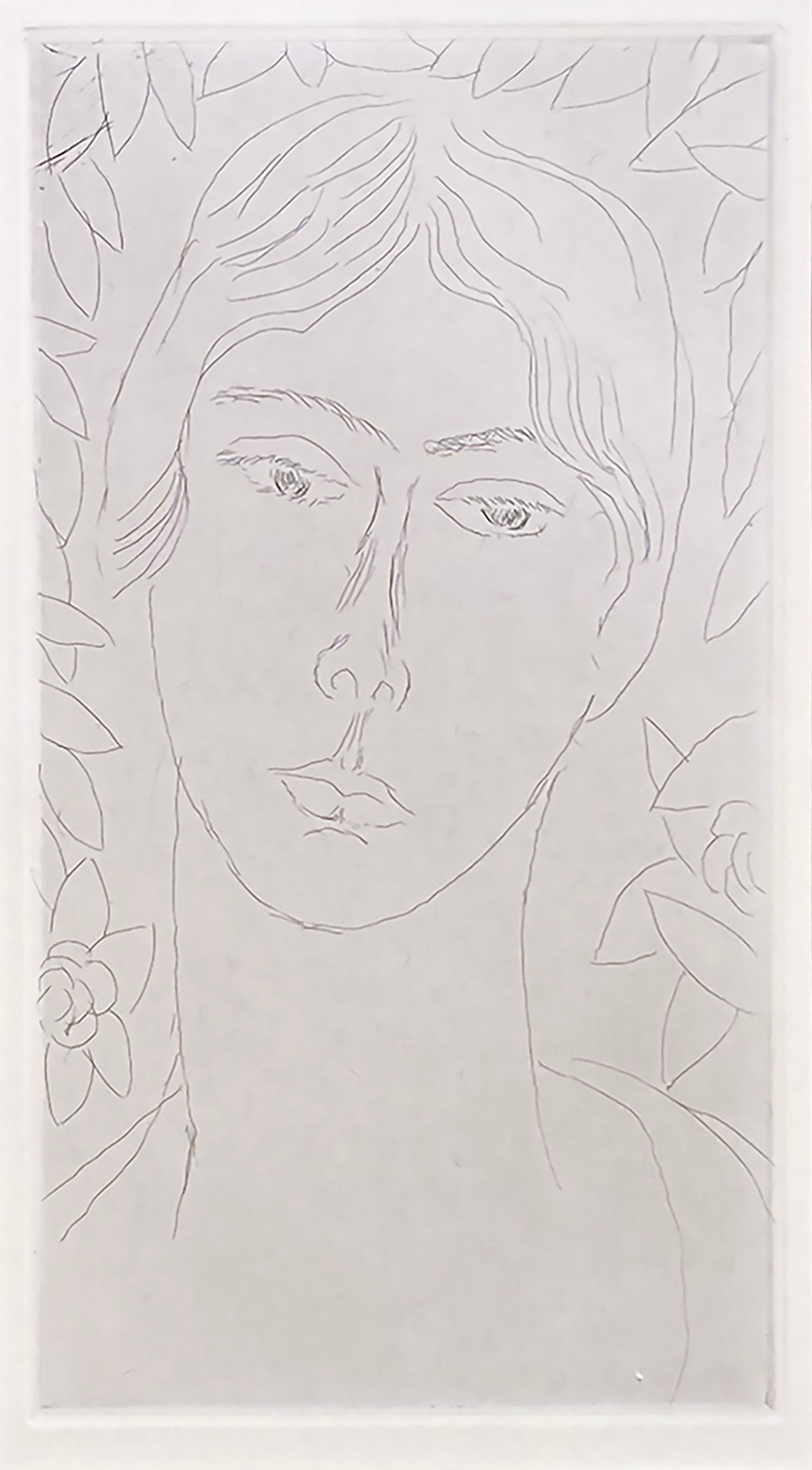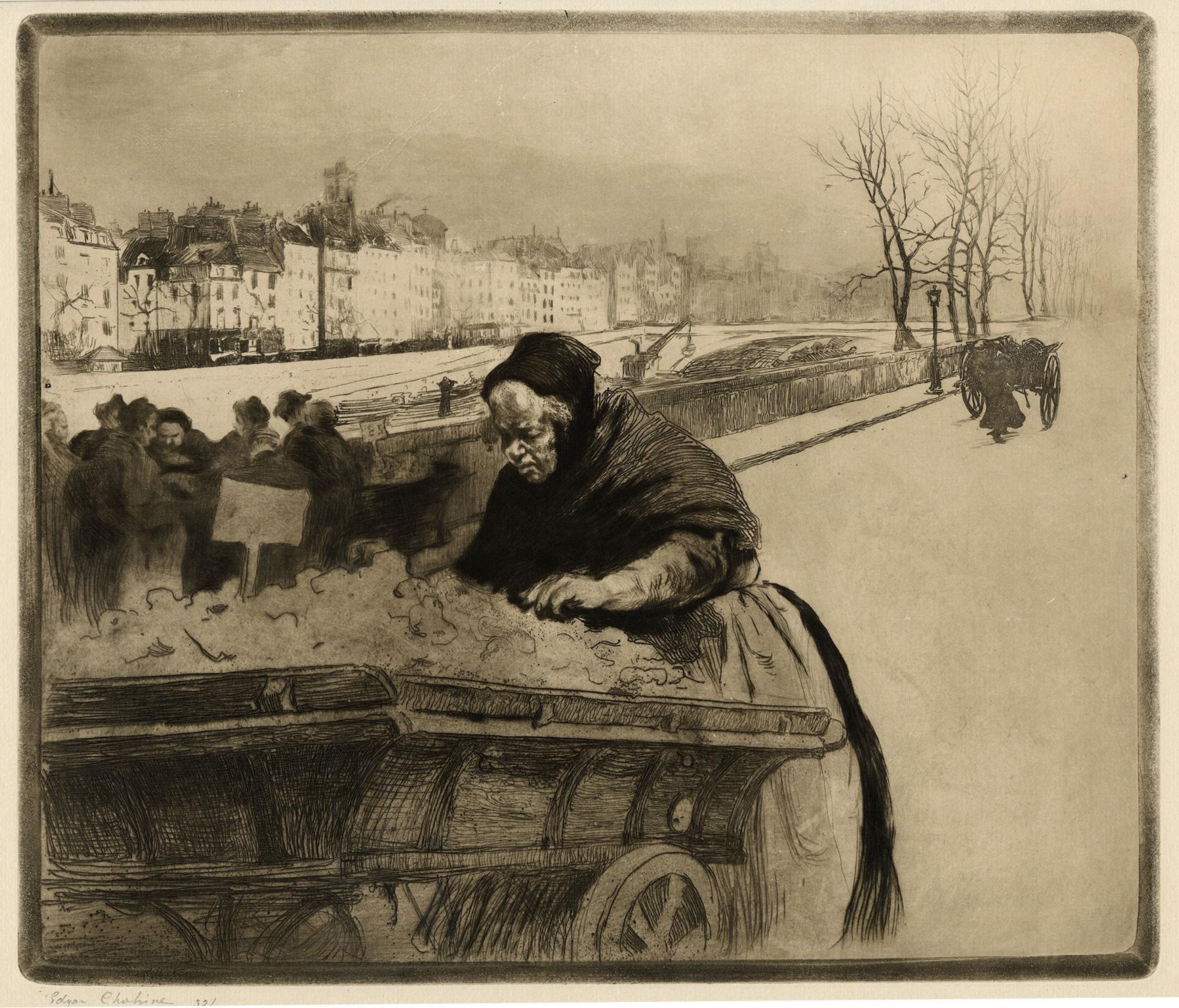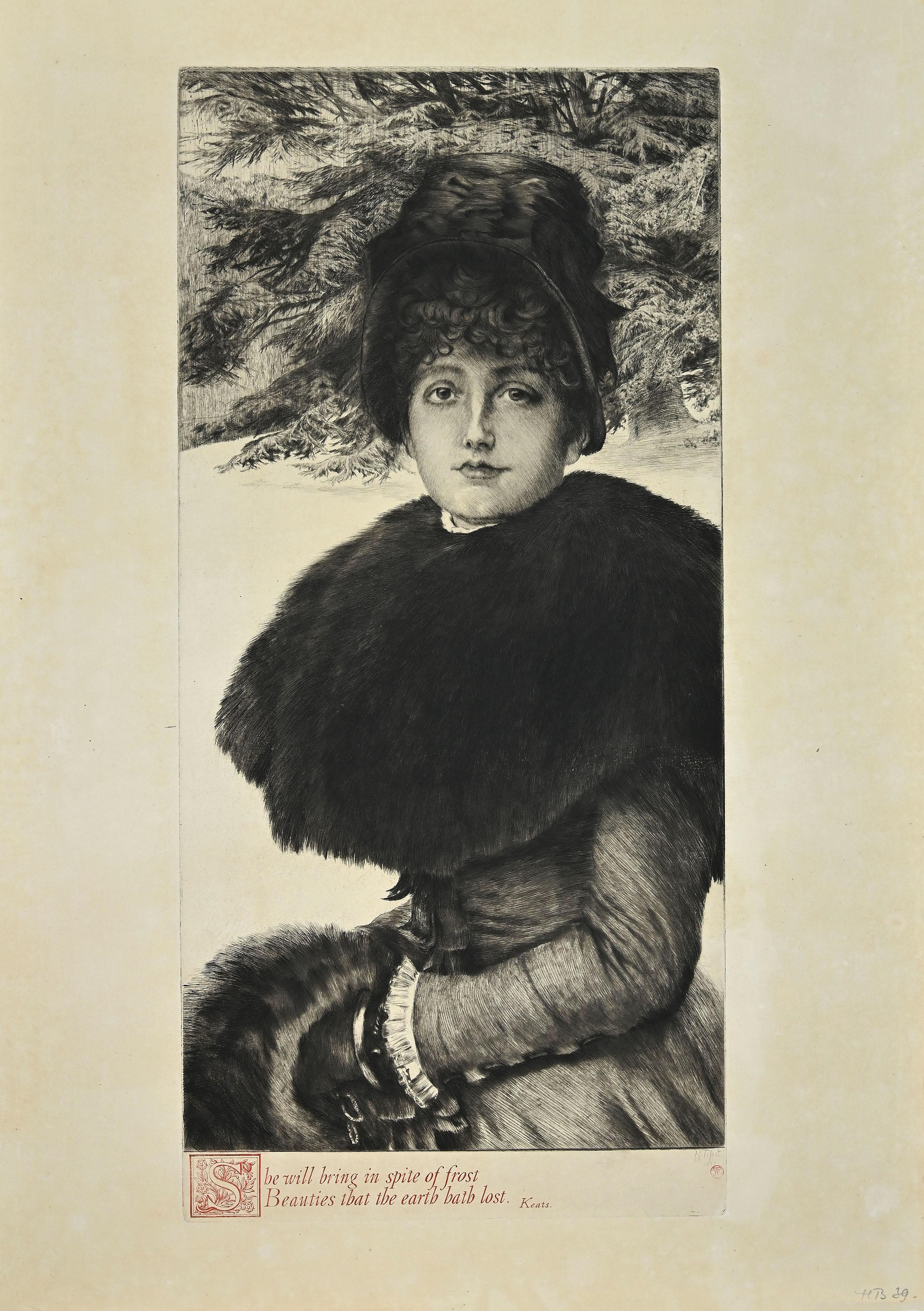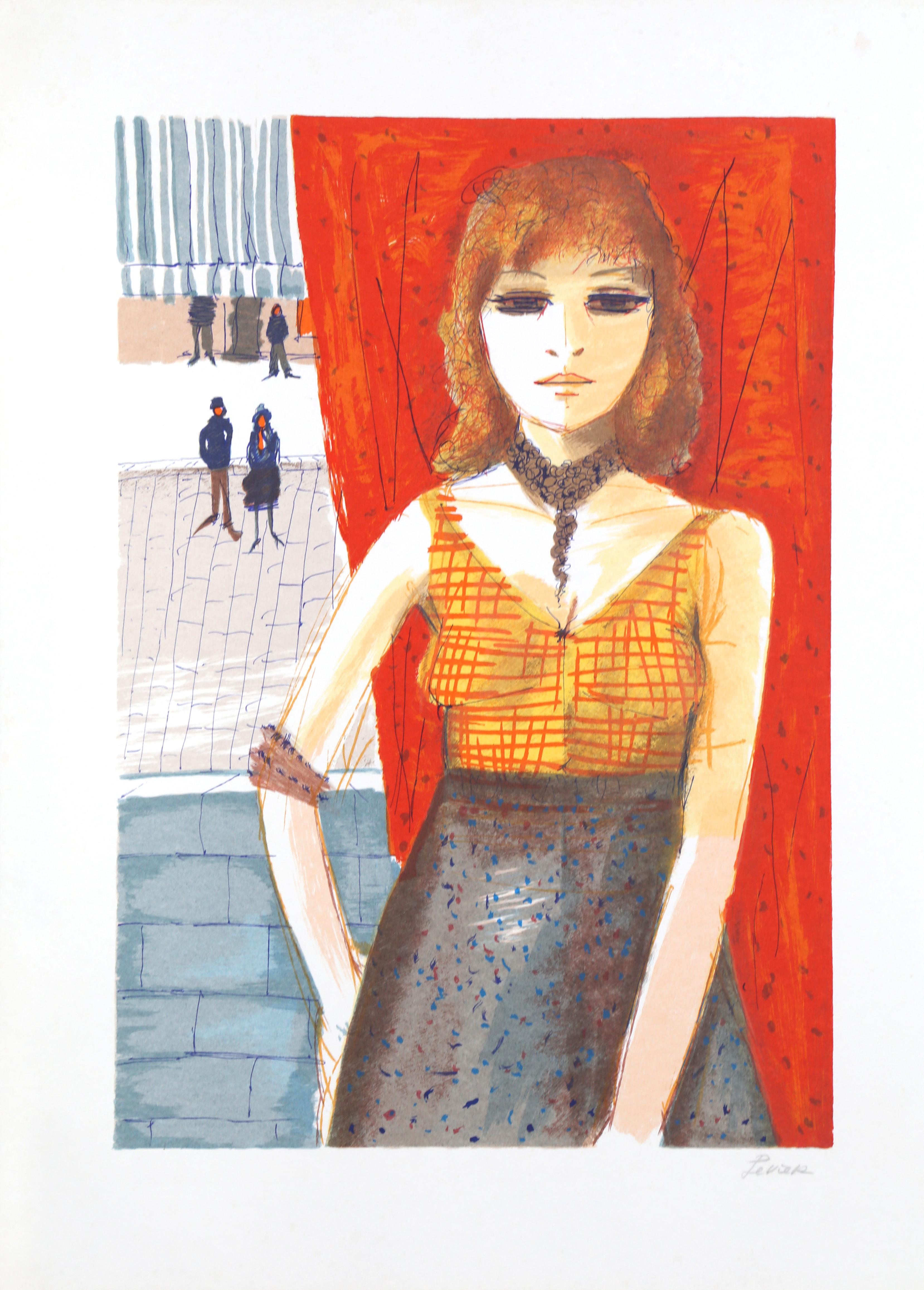Items Similar to Femme Affranchie A' Quatorze Heures Chante Midi - Georges Rouault
Want more images or videos?
Request additional images or videos from the seller
1 of 5
Georges RouaultFemme Affranchie A' Quatorze Heures Chante Midi - Georges Rouault1948
1948
About the Item
Signed on plate.
Edition of 450 prints, belonging to the suite “Miserere”, considered as the most important religious graphic work of XX century. The single prints, realized with a sophisticated mixed technique, were designed between 1916 and 1927, and finally published as a suite in 1948.
Image Dimensions : 55.5 x 43 cm
- Creator:Georges Rouault (1871-1958, French)
- Creation Year:1948
- Dimensions:Height: 25.6 in (65 cm)Width: 19.89 in (50.5 cm)Depth: 0.04 in (1 mm)
- Medium:
- Movement & Style:
- Period:
- Framing:Framing Options Available
- Condition:Insurance may be requested by customers as additional service, contact us for more information.
- Gallery Location:Roma, IT
- Reference Number:
About the Seller
4.9
Platinum Seller
These expertly vetted sellers are 1stDibs' most experienced sellers and are rated highest by our customers.
1stDibs seller since 2017
Typical response time: 2 hours
- ShippingRetrieving quote...Ships From: Rome, Italy
- Return PolicyA return for this item may be initiated within 14 days of delivery.
More From This SellerView All
- Promenade dans la Neige - Etching by J. Tissot - 1880By James TissotLocated in Roma, ITBeautiful print on verge crème, 2° state on 3, with letters printed in red. Stamp “Lugt 1545”. Little crack and fold on lower left margin of the sheet. Some small traces of oxidati...Category
1880s Post-Impressionist Portrait Prints
MaterialsDrypoint, Etching
- Lady in Saloon - Original Lithograph by Luc-Albert Moreau - Early 20th CenturyBy Luc-Albert MoreauLocated in Roma, ITLady in Saloon is an Original Lithograph on ivory-colored paper realized by Luc Albert Moreau. The artwork is in good condition with slight foxing. Hand-signed on the lower. Luc-...Category
Early 20th Century Post-Impressionist Figurative Prints
MaterialsLithograph
- Lady in Saloon - Original Lithograph by Luc-Albert Moreau - Early 20th CenturyBy Luc-Albert MoreauLocated in Roma, ITLady in Saloon is an Original Lithograph on ivory-colored paper realized by Luc Albert Moreau. The artwork is in good condition. Hand-signed on the lower. Luc-Albert Moreau (1882...Category
Early 20th Century Post-Impressionist Figurative Prints
MaterialsLithograph
- The Whisper - Original Lithograph by Luc-Albert Moreau - Early 20th CenturyBy Luc-Albert MoreauLocated in Roma, ITThe whisper is an Original Lithograph on ivory-colored paper realized by Luc Albert Moreau. The artwork is in good condition. Hand-signed on the lower. Luc-Albert Moreau (1882-19...Category
Early 20th Century Post-Impressionist Portrait Prints
MaterialsLithograph
- Two Women - Original Lithograph by Luc-Albert Moreau - Early 20th CenturyBy Luc-Albert MoreauLocated in Roma, ITTwo Women is an Original Lithograph on ivory-colored paper realized by Luc Albert Moreau. The artwork is in good condition. Hand-signed on the lower. Luc-Albert Moreau (1882-1948...Category
Early 20th Century Post-Impressionist Figurative Prints
MaterialsLithograph
- Three Nude Women - Original Lithograph by Luc-Albert Moreau - Early 20th CenturyBy Luc-Albert MoreauLocated in Roma, ITThree Nude Women is an Original Lithograph on ivory-colored paper realized by Luc Albert Moreau. The artwork is in good condition with slight foxing. Hand-signed on the lower. Lu...Category
Early 20th Century Post-Impressionist Portrait Prints
MaterialsLithograph
You May Also Like
- "Mlle Landsberg" (grade planche, pl. 16)By Henri MatisseLocated in Missouri, MO"Mlle Landsberg" (grade planche, pl. 16), 1914 Henri Matisse (French, 1869-1954) Signed and Numbered Lower Right Edition 12/15 Image size: 7 7/8 x 4 5/16 inches Sheet size: 17 11/16 x 12 1/2 inches With frame: 19 1/2 x 14 1/2 inches Henri Matisse came from a family who were of Flemish origin and lived near the Belgian border. At eight o'clock on the evening of December 31, 1869, he was born in his grandparents' home in the town of Le Cateau in the cheerless far north of France. His father was a self-made seed merchant who was a mixture of determination and tightly coiled tension. Henri had no clear idea of what he wanted to do with his life. He was a twenty-year-old law clerk convalescing from appendicitis when he first began to paint, using a box of colors given to him by his mother. Little more than a year later, in 1890, he had abandoned law and was studying art in Paris. The classes consisted of drawing from plaster casts and nude models and of copying paintings in the Louvre. He soon rebelled against the school's conservative atmosphere; he replaced the dark tones of his earliest works with brighter colors that reflected his awareness of Impressionism. Matisse was also a violinist; he took an odd pride in the notion that if his painting eye failed, he could support his family by fiddling on the streets of Paris. Henri found a girlfriend while studying art, and he fathered a daughter, Marguerite, by her in 1894. In 1898 he married another woman, Amelie Parayre. She adopted the beloved Marguerite; they eventually had two sons, Jean, a sculptor and Pierre who became an eminent art dealer. Relations between Matisse and his wife were often strained. He often dallied with other women, and they finally separated in 1939 over a model who had been hired as a companion for Mme. Matisse. She was Madame Lydia, and after Mme. Matisse left, she remained with Matisse until he died. Matisse spent the summer of 1905 working with Andre Derain in the small Mediterranean seaport of Collioure. They began using bright and dissonant colors. When they and their colleagues exhibited together, they caused a sensation. The critics and the public considered their paintings to be so crude and so roughly crafted that the group became known as Les Fauves (the wild beasts). By 1907, Matisse moved on from the concerns of Fauvism and turned his attention to studies of the human figure. He had begun to sculpt a few years earlier. In 1910, when he saw an exhibition of Islamic art, he was fascinated with the multiple patterned areas and adapted the decorative universe of the miniatures to his interiors. As a continuation of his interest in the "exotic", Matisse made extended trips to Morocco in 1912 and 1913. At the end of 1917, Matisse moved to Nice; he would spend part of each year there for the remainder of his life. A meticulous dandy, he wore a light tweed jacket amd a tie when he painted. He never used a palette, but instead squeezed his colors on to plain white kitchen dishes...Category
1910s Fauvist Figurative Prints
MaterialsEtching, Drypoint
- La Marchande des Quatres-SaisonsBy Edgar ChahineLocated in Middletown, NYEtching with drypoint on cream wove paper, 11 3/4 x 13 3/4 inches (297 x 347 mm), full margins. Signed in pencil and numbered 32/40, lower margin. Minor mat tone and several small lo...Category
Early 20th Century Post-Impressionist Portrait Prints
MaterialsHandmade Paper, Rag Paper, Drypoint, Etching
- "Hopi Maiden" - Print 44/200 Native American Woodcut PortraitBy T.C. CannonLocated in Houston, TXBold and colorful portrait by renowned artist T.C. Cannon of a Native American woman in a stripped shawl titled "Hopi Maiden." Signed along bottom edge. Ed...Category
1970s Post-Impressionist Portrait Prints
MaterialsWoodcut
- Red Head, Lithograph by Charles LevierBy Charles LevierLocated in Long Island City, NYRed Head Charles Levier, French (1920–2003) Date: circa 1970 Lithograph, signed and numbered in pencil Edition of 250 Image Size: 24 x 16 inches Size: 30 x 22 in. (76.2 x 55.88 cm)Category
1970s Fauvist Figurative Prints
MaterialsLithograph
- "Troupe de M'lle Eglantine" 1974 Albi Museum authorized limited edition posterBy Henri de Toulouse-LautrecLocated in Boca Raton, FL"Troupe de M'lle Eglantine" 1974 reproduction of an 1896 poster by Henri Toulouse-Lautrec produced under the auspices of the Lautrec Museum in Albi, France. Authenticated with museum...Category
1890s Post-Impressionist Portrait Prints
MaterialsLithograph
- "Woman at the Window" Colorful Native American Woodcut Portrait Print Ed. 44/200By T.C. CannonLocated in Houston, TXBold and colorful portrait by renowned artist T.C. Cannon of a Native American woman in a red dress with a gold cross around her neck titled "Woman at the Window." Signed along botto...Category
1970s Post-Impressionist Portrait Prints
MaterialsWoodcut
Recently Viewed
View AllMore Ways To Browse
Rouault Miserere
Wine Press
Vintage American Shield
French 19th Century Architectural Drawings
Love Over Rules
Picasso Bird Paintings
Rain Dance
Rain Dancer
Vintage Star Wars Sign
Les Muses Vintage
M Jacques
Contemporary Nude Reclining
Rose Ballet
Jewels Connection
School Bell Vintage
Dali Dante
Selection Lithographs
Write A Review




